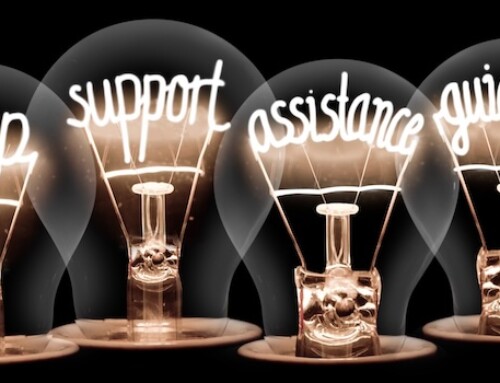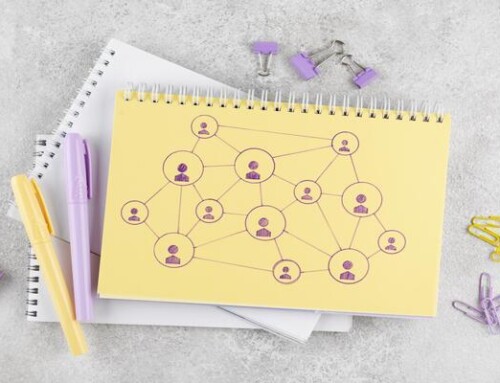As lockdown easing continues, and the UK vaccine programs efficiency leads to more membership professionals returning to member-facing offices around the UK, there has never been a better time for associations to take a moment to think deliberately; strategically, and to undertake some serious self-reflection before re-engaging with teams face to face.
“You never get a second chance to make a first impression”. Will Rogers famously once said.
If the first 90-days of a CEO’s reign are the pivotal opportunity to set the tone for the organization, to outline culture, layout their game plan & connect with their employees, then I would humbly suggest that membership CEO’s have an incredibly rare opportunity in these next 90 days. Never have we, as Senior NFP leaders, had a stronger opportunity to reset our relationships with our employees, our volunteers and our suppliers with whom we might want to take advantage of that rarest of commodities, a second chance.
Goodness knows many of us should welcome it. Given the year we have all endured as leaders and humans, we should reflect and seek to review our past behaviours and values as they relate to our people; to how we view ourselves as professionals and organisations; the honesty of our engagements with our stakeholders; and as to how close members (it’s subtly and vitally different from customers after all) truly remain at the forefront of our thoughts and the heart of our institutions — in governance, engagement and action.
I would argue that we all, as membership association leaders, need to reinvent ourselves and our organisations in light of the changes the year has brought; to ensure we are truly Digital (first, but not only) sustainable & ethical, diverse, transparent and as future proofed as possible, protecting members financial and emotional investments for the years ahead. CEO’s and EXCO’s need to think positively of this post-covid reset as their own personal Groundhog Day, if not for them then for the benefit of members and their teams.
On the subject of reinvention, here are some thoughts on our greatest asset, people and their engagement in the mission, from the experience of one Membership & Engagement Exec Director after 7 demanding and rewarding years in the ever-challenged discretionary membership sector.
A recent survey from the US Best Practice Institute found that: “Only 13% of employees want to return to the office full-time, with many expressing concerns about safety”.
Reset, Restart and get it right on day one — The stat above says that 87% of our people aren’t sure they want to be physically with us on day one of the return to office. We therefore have a herculean challenge, just to reassure our people as to their safety, and to remind them of the WHY at the heart of the WHAT we do as an organisation. On the practical side of course we need to think about how we can brief people whilst social distancing; how we provide delegates/visitors, members and staff with easily accessible and digestible visual and auditory guides to follow whilst in our buildings or shared-spaces. We can paint the safety guidance and rules high and clear, and make sure everyone knows them by verse, but it may take more this time to make people feel happy to be back with us.
A sincere CEO “thank you for your support and here’s what happens next” video sent to each employees email, just before the big day, along with a meaningful gesture, perhaps a goodie bag of healthy treats might just help some of employees feel valued, settle some nerves, and reassure people that their leaders have this under control and care. Being prepared on day one to answer difficult questions about safety, the organisation, the recovery strategy and thereby everyones futures will be equally vital.
We must recognise the difference between those whom have been WFH & those on long-term furlough, and the impact this may have on their current feelings of commitment and engagement, and cater the return to work messaging accordingly, and with due respect to difficulties the changes made have made to personal lives. More than anything, on day one, we must, as leaders, be able to weave a narrative that reminds our people why we sacrifice some of the financial rewards of the commercial sector, our guiding north star and purpose to help us regain our centre of equilibrium.
We should obviously make sure the Employee assistance program numbers and any staff-support reps are known, give employees the opportunity to ask questions (remotely and in the building) and not forget both the mental and physical aspects of returning to work after up to a year away; Plan and Communicate well in advance & let’s start back right, first time.
Be visible & walk the floor — A small but powerful lesson I learnt from one of many past DG’s, Stephen Martin, was to enact a genuine commitment to hearing from everyone. Genuinely engaging with everyone in the building, whenever you can, for a few moments (whether getting water or enroute to passing it) makes a fundamental difference to perception, to culture and to employee wellbeing, especially when times get tough. I cannot recommend this to senior leaders enough. It should be taught on every leadership course. Be visible; be yourself (and let you, I hope, be blessed with good EQ CEO’s) actively listen & act on relevant feedback and communicate clearly that you have.
“57% of talent professionals say a roadblock to improving employee experience is not having enough people dedicated to it, as well as not enough budget (55%), not enough time (48%), leadership doesn’t prioritize it (43%), and can’t justify the investment (29%)”
LinkedIn Global trends, 2020
Commit to a genuine employee promise/employee value proposition (EVP) — Don’t be like the 43%. After all your customer promise or VP is clear, demonstrable and strong, but as much time must be prioritised into ensuring the EVP (recruitment/on-boarding, culture, retention & reward) is every bit as robust, as measurable and as fervently enforced. There’s never been a better time to live (or might I suggest revise in the light of a new reality) our core values and generate some long-term loyalty through making some hard & fast commitments to how we shall behave with our people, current, past and future, in both the good & difficult times.
Commit to an Employee Voice Group & Board apprentice –A group of truly diverse, in every sense, junior leaders (mentored by the right person of seniority) duly elected by their peers, could be tasked to monitor & report on the employee experience; to help support relevant & engaging all-hands meetings, and to act as a temperature gauge for the EXCO, making sure messages are received & understood (the vital part). Given the correct, transparent terms of reference an EV group can deliver positive culture change and help provide an unrivalled opportunity to grow and develop future stars, to re-engage some good but currently “on the fence” workers, and to demonstrate you are open to contributions & ideas, and to hard but necessary questions & feedback, and are truly honest & transparent.
Apply good governance to the group and teach your junior managers how to act like a board, with all the challenges that come with it. Engage them. Truly. Get them involved in conversations, wherever you can, it will transform your relationship with your wider employees. And don’t forget, alongside core EDI differentials, to also balance those who’ve been WFH, on furlough etc, because as the experience differs, so will the need to be represented.
If you are institutionally mature enough to do so, I’d personally go a step further, and invite future leaders to sit in on relevant portions of EXCO or Trustee/Council meetings regularly, to listen, learn & feedback, and to think seriously as a Board about recruiting a Board apprentice from Boardapprentice.com to help both diversify your composition, and further to engender challenging differntiated conversations at your meetings.
“Legacy & tradition alone wont save us, but engaging our people just might”.
Take time to “Check in” on your past external ambassadors — Let’s be honest, 2020 was a cluster-bugger. We have all had to let people go thanks to covid, but have you stopped and checked in with those younger, at risk, or longstanding staff members you had to lose in 2020? Take the time to have (well adjusted and eq-blessed) senior management check-in with anyone you lost, whom still has the “open to work” circle on LinkedIn; to those volunteers whom left you because their business was in understandable crisis; or those you had reason to question the potential wellbeing thereof. They might not always thank you for it, but as a responsible employer, it’s the right thing to do. Especially for those first-jobbers, or those whom over many years of commitment have helped create the organisation as it stands, even if the time to move on had come for either party. It may cost you some time, but it will undoubtedly make your values and ESG promises far truer than just the well-practiced mission statement on the wall.
Be flexible — Reconsider as to the where & how — if you really don’t need that function back in the office, don’t force the arbitrary soul-destroying commute upon them. Instead gain those fresher, more committed & willing employers whom will go the extra mile, and use that saved commute time to give back to your business. And then think if you even need the office anymore (more on that next time). Covid has changed everyone’s lives, be considerate, make allowances, and try to accommodate as much flexi-working/job-sharing as the business model allows — it might just retain some really good people whose lives, needs and priorities have changed forever.
Be Leaders in Wellbeing — Invest in training some mental health first aiders (@MHFA) across all levels of the organization (WFH/remote & regionally). Never in our lifetimes will people potentially miss having had someone to talk too more or be in more need of help readjusting to the work/life balance (87% don’t want to be back in the office remember). Being MHFA trained myself; I genuinely see the value in my work and personal interactions every day. Make sure a senior leader commits to this too, evidence your support & seriousness in all that you do as an employer and be at the forefront of helping us avoid the negative mental health flood that enforced isolation may bring upon us.
Don’t forget to consider additional EAP/HR support for potential Long-covid effected employees.
Reward those that earned your Trust –Put more realistic bonuses targets in their JD’s, offer alternate incentives including a long-term commitment to their L&D, offer charity/volunteering days, mentoring, and invest in acknowledgement, and realistic reward & recognition across the business, loudly shouting the names of good performers from the rooftops. Engage them & make them your best ambassadors (after members).
Divest yourself of dinosaur behaviours & thinking – The dinosaurs died out approximately 65milion years ago. Those that still practice the ‘I can say that (utterly unhelpful or outrageous thing) because I’m from Scotland/Yorkshire/other random place’” mentality should have gone then too, but just like in a matter of life & death, they unfortunately perhaps missed the celestial messenger in midair.
“In our report on The Culture Economy we found that poor workplace culture is costing the economy £23.6 billion a year. It is a hole that needs to be plugged”.
Source: Breathe HR
It’s not OK for board members, Executives, staff, volunteers or members to still speak to and of people like it’s the 50’s and EDI never happened. Deal with those dinosaur attitudes that you overly tolerated before the world turned, and be genuine in your commitment to a positive, healthy working environment. Because now, of all times, it will be vital for your culture. We can never fully remove the stress or workload, but we can deal with destructive personal behaviours that affect our teams. And support your junior managers to do so; don’t leave them to deal alone with those most challenging characters.
Some people’s outdated thought processes will also need to be replaced. Can this person/this function move with us into the new normal? Do they have the mindset or skillset we need (or can afford) in this new world? And if they don’t, divest yourself professionally & respectfully, with significant attention to the process and experience they will go through, and with as much professional courtesy & vigour as you would the business case and desired outcomes you wish to achieve. Treat your voluntary (and involuntary) leavers as you would any valued stakeholder and leave the best impression you can.
Survey your workforce, listen & act– the L&D and HR teams should be ensuring a good amount of pulse survey engagements with employees, to ensure that the “what & how” they feel is heard, absorbed and where practicable costed and/or implemented, during these vital first few weeks of change. Use Digital tools to facilitate constant flow of comm’s with your team, from TEAMS sessions to anonymized feedback & “ask the DG”” lines. And make sure your HR team is actually a truly functioning People and Culture function, because respectfully, as the Foo fighters once said, “one of these things is not like the other” and a poorly functioning people team can cause untold damage to employee morale.
“Mentoring programs boosted minority representation at the management level from 9% to 24% in 2020”
Forbes
Proactively support buddying & mentoring — Think about mentoring and reverse mentoring opportunities within the business for those that could benefit from them. Managed professionally it’s a great learning & bonding tool, and can led to improved minority representation, productivity and buy-in. Equally many of your members are perfectly placed to support and develop your people, and would love to do so. Spend some of the time spent acquiring meeting & zoom fatigue, composing a mechanism to connect your junior (and senior) managers with relevant, willing ambassadors. And if you have a student or graduate membership, think seriously about how to connect them with staff & members to ensure everyone benefits from reverse mentoring.
Finally, Over-Communicate — More than anything, if you undertake any of these actions or others to support your people; just commit to communicating. And then when you think you’ve communicated enough, do it again, and again, and again…. Don’t let the return to the office hard the considerable efforts and innovations you have undoubtedly enacted to ensure improved communication and engagement during lockdown and enforced remote working.
You can never over-communicate good practice, good news, and supportive employer behaviour in my view. Don’t assume people hear you, because they don’t, especially if they are working remotely, or they have “hidden” personal challenges, such as dyslexia, adhd, or many of the other conditions that effect how we receive and/or process information.
Over-communicate positive messages, and make sure you recognise good performance loudly. And then do it again. All the time, as second nature.
Alan Fitzwater FCMI MIoD former-Director of Engagement, Commercial & Change:Membership (sales, marketing)) Communities (members & trustees/volunteers) & Communications (Stakeholders, Content & Events). Currently volunteering & writing a book.









Leave A Comment